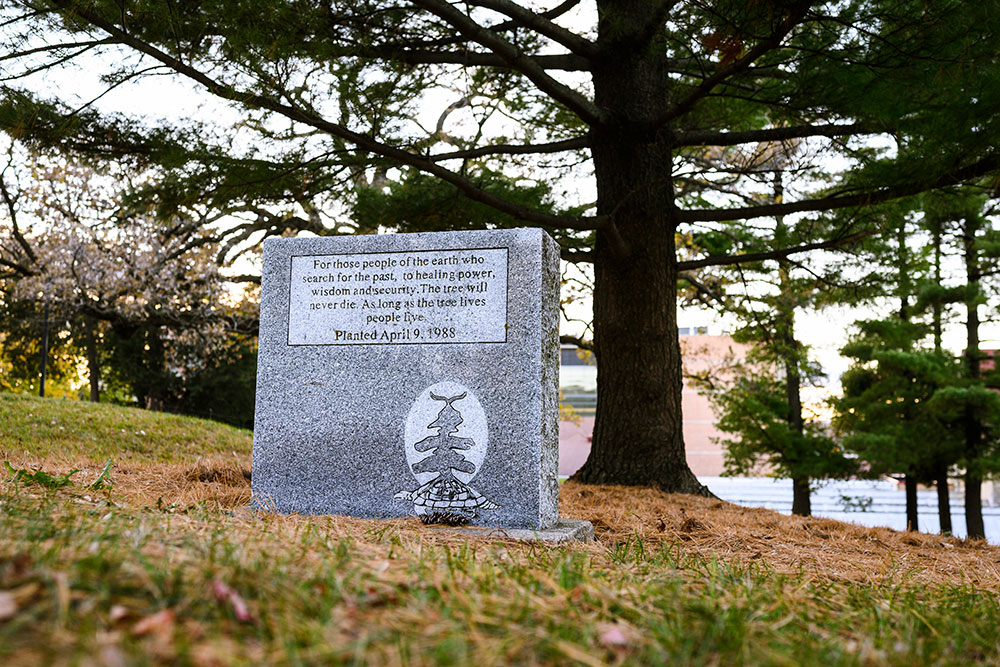
A stone marker details the indigenous meaning of The Tree of Peace – a Native American cultural icon planted in 1988 on Observatory Hill near Washburn Observatory – as the sun sets over Observatory Hill at the UW during autumn on Nov. 2, 2021. The Tree of Peace stands near two visible effigy burial mounds, which were part of a larger mound group created over one thousand years ago. The UW campus is located on ancestral lands of the Ho-Chunk Nation, on what they call Teejop (day-Jope), the Four Lakes. (Photo by Jeff Miller/UW-Madison.)
The Department of Family Medicine and Community Health respectfully recognizes that the University of Wisconsin-Madison campus, here on the shores of Waaksikhomik (wunk-shick-HOME-ick-la, or Lake Mendota), resides within the sacred homeland of the Hoocąk (Ho-Chunk) people, a place they call Teejop (day-JOPE, or Four Lakes) since time immemorial. In an 1832 treaty, the Ho-Chunk were forced to cede this territory which was followed by decades of ethnic cleansing when both the federal and state government repeatedly, but unsuccessfully, sought to forcibly remove the Ho-Chunk from Wisconsin. Our land grant university could not have been established or sustained were it not for state and federally sponsored settler colonialism that disposed and displaced American Indian nations and communities across our state. We must now confront the outcomes of unjust land treaties and the harm caused by our university’s past complicity with policies of cultural and physical genocide as we seek reconciliation with Indigenous nations and communities of Wisconsin.
We acknowledge the circumstances that led to the forced removal of the Ho-Chuck people and honor their legacy of resistance and resilience. This history of colonization informs our work and vision for a collaborative future. We recognize and respect the inherent sovereignty of the Ho-Chunk Nation and the other 11 Native Nations within the boundaries of the state of Wisconsin.
With a spirit of humility and openness, we pledge to do the hard work of reflection and truth-telling so that we can move toward transformative healing.
For more information about the Ho-Chunk Nation and other 11 Native Nations of Wisconsin, please visit the UW-Madison Tribal Relations website. For more information about Indigenous health professionals at the UW-Madison School of Medicine and Public Health, please visit the Native American Center for Health Professions (NACHP) website.
Additional resources:
- Beyond Land Acknowledgement: A Guide from the Native Governance Center
- Dividing Ridge, Madison WI
